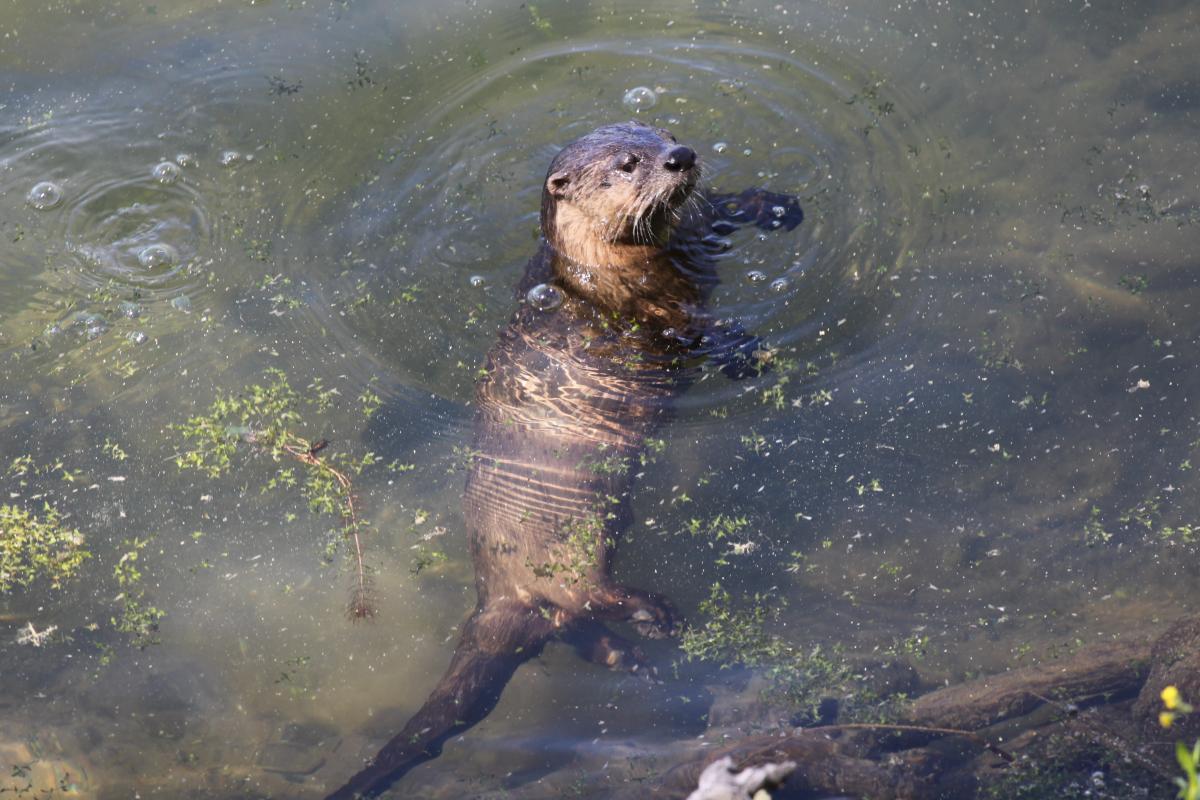Chesapeake Bay Otter Alliance
About the Project
The Chesapeake Bay Otter Alliance is a group of scientists, educators, and community members who are working to find and learn about river otters throughout the Mid-Atlantic region. We want to better understand where otters are living and what they are doing there. We also want to study the kinds of parasites and diseases that otters have and if humans could become infected or sick by eating the same food or swimming in the water. By better understanding otters, we can better track changes in water quality threats to public health around the Bay!
Have you seen otters in your area?
Check out more about Katrina's lab and what they are learning from otters HERE.
The "What" and the "Why"

Water is fundamental for all life, but in many urban and suburban areas, waterways have been damaged by human impacts. Many of these rivers and coastal areas are plagued by toxins, pollutants, and trash, which can negatively impact human health, local economies, and harm precious wildlife. Monitoring water quality for a wide range of pollutants and pathogens is beyond the capacity of most communities and researchers.
Instead, scientists look for sentinel species, which are animals that are used to monitor environmental conditions. Often, they are sensitive to negative environmental conditions and can be infected by the same parasites and pollutants as humans. Tracking these sentinel animals, and their poop, is generally easier than making lots of water quality measurements and can often provide lots of information about the health of the environment.
Despite being a little elusive and primarily nocturnal, North American river otters are playful, social animals that are also top predators in the Chesapeake Bay. Along the shore they use special places called “latrines” to poop, urinate, eat and, most importantly, socialize. Thus, these latrines provide non-invasive access to study river otter behavior, diet, health, and overall ecology.
The presence of otters in rivers and coastal areas is generally a sign of good water quality and healthy waterways. Additionally, river otters eat many of the same seafood species that people do, including oysters, clams, white perch, and shad. By studying what the river otters eat within our local waters, we can learn what parasites, pathogens, and pollutants these food sources might be carrying that not only impact the river otters but could also be harmful for people.
Because our research team at SERC can’t be everywhere at once, we are working with several organizations and volunteers to map out where river otters are around the Chesapeake Bay. The Chesapeake Bay Otter Alliance (CBOA) includes organizations across the National Capital Region, including the Smithsonian Institution, the Anacostia Watershed Society, the Rivanna Conservation Alliance, DOEE, EJJI, and the National Aquarium. We have also worked in collaboration with many state, county, and regional parks.
Get Involved

Have you spotted an river otter?
Snap a photo of the otter or signs it was there (e.g., scat or tracks) and share it with us.
Want to partner with us?
Our list is constantly growing and we are always looking for new partners

Coastal Disease Ecology Lab Technician Calli Wise in the SNZCBI river otter enclosure placing cameras to monitor the zoo otters.

Calli Wise surveying the rocky shoreline at North Point State Park. (Credit: Calli Wise/SERC)
Have you seen otters in your area?
Our research team can’t be everywhere at once so we need your help to map and learn where river otters are.
If you've spotted river otters or signs of a river otter (slides, scat, or tracks), snap a photo and submit it to our project on iNaturalist.
You can submit observations from the app on your phone or through the iNaturalist website. No need to join the project—any river otter sightings within the Chesapeake Watershed will be automatically included. Join the project if you'd like to stay up to date on progress and get notifications when we post project updates.
Reminder: River otters are wild animals, and their scat can contain parasites. If you see an otter, stay safe by maintaining your distance and taking a photo from far away. If you see scat or track, stay safe by taking photos (no touching).
Not sure you saw an otter? Check out our field guide to see examples of scat and footprints that otters leave behind.
Where's the old form? If you've submitted an observation before, you'll notice things are different! We've migrated our sighting efforts to iNaturalist, a free platform that is widely popular and is where many people are already submitting river otter observations. By using iNaturalist you can see your observation and observations by others in real time.
Questions? Email our team at SERCOutreach@si.edu.
Want to partner with us?

The goal of the alliance is to promote the North American River Otter (Lontra canadensis) as a 1) sentinel species to help us detect risks to ecosystem and public health and 2) flagship species for coastal conservation.
Our alliance includes experts in mammalogy, parasite and disease ecology, fisheries and estuarine ecology, veterinary medicine, animal behavior, and education.
Key collaborators include Smithsonian’s National Zoological Park, the Smithsonian’s National Museum of Natural History, Montgomery College, and the Anacostia Watershed Society.
Our list is constantly growing and we are always looking for new partners! If you are interested in joining our alliance, please email Katrina Lohan at lohank@si.edu.
